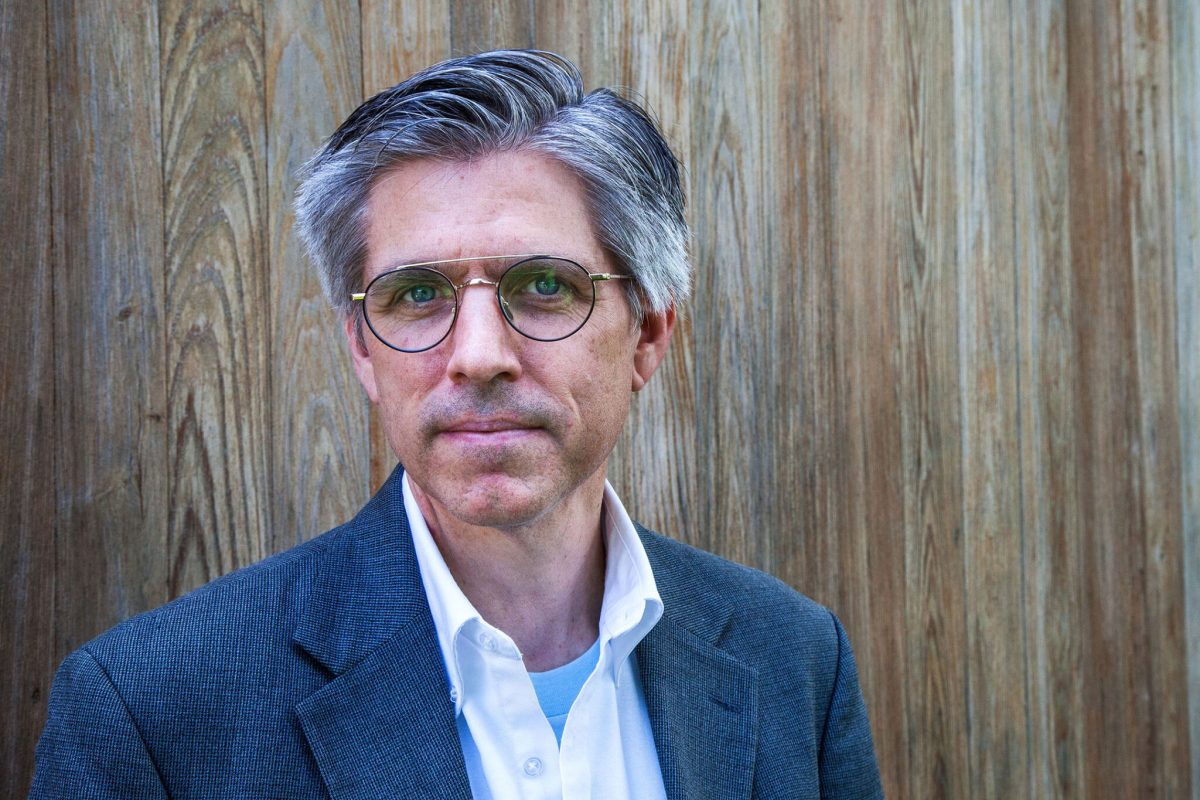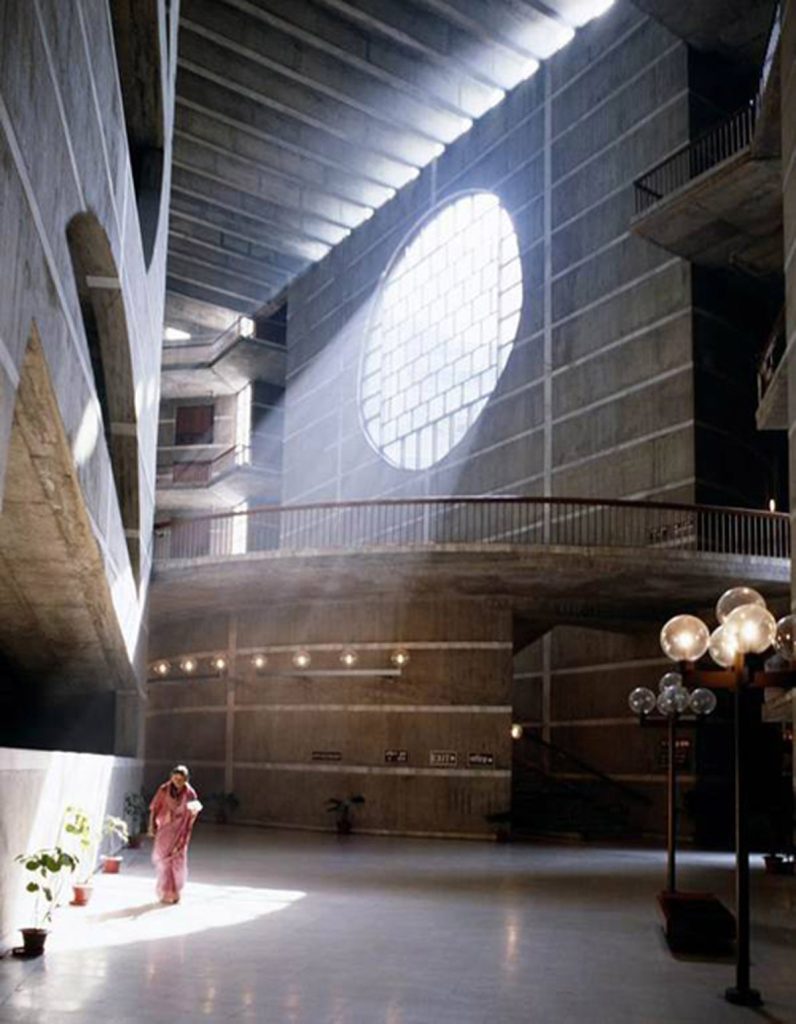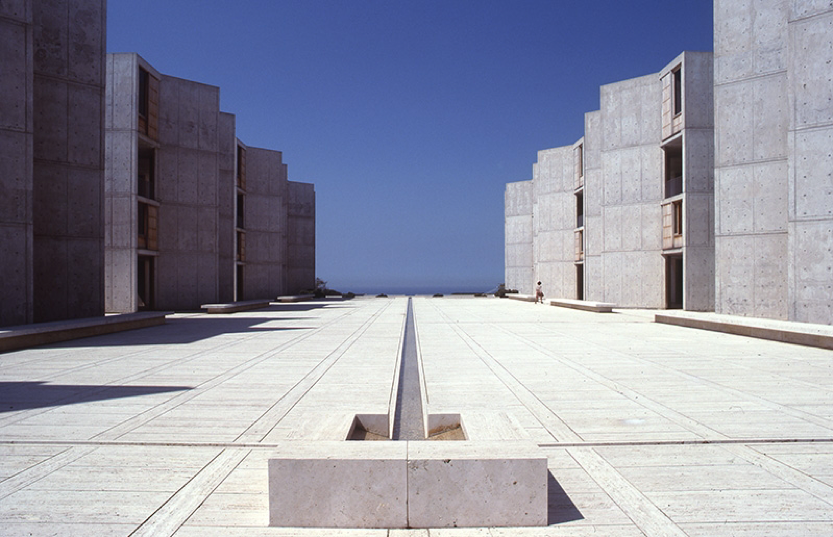Visions of a Coming City: William Whitaker on Louis Kahn’s Legacy in South Asia
Despite achieving a legacy as one of the 20th century’s preeminent figures in architecture, many remain unaware of Louis Kahn’s substantial achievements across South Asia and their embodiment of his deeply held modernist artistic ideals.
On Saturday, June 10, SAM’s Saturday University Lecture Series will host curator and archivist William Whitaker for a discussion on Kahn’s many travels to South Asia accompanied by rare images and documents from the Kahn Archive at the University of Pennsylvania. In advance of his talk, SAM Manager of Public Engagement Haley Ha spoke with Whitaker to understand what made Kahn’s architectural vision in South Asia so noteworthy.
Haley Ha: You were trained as an architect and currently serve as a curator of the Architectural Archives at the University of Pennsylvania’s Weitzman School of Design. Can you tell us about your role and explain a day in your life as an archivist?
William Whitaker: I see myself, in part, as a teacher who uses collections to educate young architects and landscape architects about thinking and developing their ideas through design. Looking at the drawings of an architect like Louis Kahn can reveal much about their individual talent and way of working, but also about their collaborations with others in the drafting room, on the job site, or in conversation with their clients. The big idea is that thinking through drawings helps you to understand what is good, what is really good, and most importantly, the difference between the two. I meet with high school and college students to talk about and think through topics such as “taking notes on site.” We do this over a large table packed with archival collections: artist sketchbooks are always a favorite, but photography and other techniques also inform and reshape the understanding of place—and these techniques are not always visual! Archives provide an essential tool for understanding why things are the way they are, so incorporating the archive into public exhibitions and tours to a broader public is important to me and the work that I do.
HH: How did you first encounter Kahn’s work? What about it caught your interest?
WW: You can learn a lot from Louis Kahn. His way of working was a struggle that remains visible in his writings and lectures, as well as in the histories of the clients and staff who worked closely with him. His work was also consequential in reinvigorating architecture and its connection to history, place, and the craft of building. He brings a wonderful sense of the human element into his architecture with the expectation that places have the potential to profoundly impact the people who use them.
As an architecture student in the late 1980s, Kahn’s work was often discussed so I knew there was something to learn by looking at his work and understanding his collaborations with engineers, landscape architects, and clients. The first building I ever saw that he designed was the Salk Institute in La Jolla, California (1959–67). A friend and I drove through the night from Albuquerque, New Mexico to see the building and it was a life changing experience. Working toward my Master’s degree at the University of Pennsylvania opened up the possibility of working in the Architectural Archives where Kahn’s papers and drawings are kept. I’ve been there 30 years now and continue to learn from his work on a daily basis.
HH: This month’s Saturday University lecture presents a rare opportunity to engage deeply with Kahn’s work in South Asia. Can you tell us about his time in Asia and the lasting impact it left on him and his legacy?
WW: Between 1947 and his death in 1974, Kahn traveled extensively across the continent where he worked as an architect across India, Pakistan, Bangladesh, Iran, Nepal, and Israel. Meanwhile, back at the University of Pennsylvania, his “master’s studio” was comprised of 68 students from Thailand, India, Japan, Korea, Taiwan, Turkey, Iran, Syria, Iraq, Kuwait, Lebanon, and Saudi Arabia. In Japan, at the Katsura Imperial Villa, Kahn experienced the deep interrelationship between a building and its landscape, including the magnificent ways the elements of nature—from light to wind and sound—are modulated to inform or shape the human experience.
HH: Kahn, unlike many of the Western architects working in Asia at the time, engaged deeply with the social and political fabric of the cities he worked in and considered their existing architecture, histories, and cultures when drafting his designs. How will these concepts be explored in your Saturday University lecture?
WW: There are distinctions to be made between buildings that serve and support a civic purpose and those conceived of as drivers of economic development. Kahn saw his work as supporting “institutions” important to the development of individuals and their ability to realize their own worth—places to learn, places to assemble, or places that honored human endeavor. It was Kahn’s search for a deeper purpose in architecture that continues to be relevant to this day and serves as the foundation of my lecture.
HH: While Kahn belonged to no particular faith, he was drawn to religious sites and left behind many sketches of ancient temples, churches, and mosques. How do you see the notion of spirituality or the “sacred” manifest in Kahn’s work?
WW: I think you can see it in his appreciation of the everyday. Kahn has an amazing eye for such moments and this is made clear in his notion that, “A city should be a place where a little boy walking through its streets can sense what he someday would like to be.” I would point to the study carrels in his library at Phillips Exeter Academy, the candle niches of the Hurva Synagogue, or the monumental steps at the Four Freedoms Park as expressions of how an individual becomes aware that they are part of something much larger than themselves.
HH: Visitors to Kahn’s works have been quoted as having something close to a ‘spiritual experience’ while occupying his spaces. Can you explain what Kahn meant when he said that the “building is a living thing” and how this may explain visitors’ experiences at his sites?
WW: Kahn based the conception of a building on human desire and providing a platform to support the impulse to express. As such, his buildings are an expression of human experiences and feelings. Here, Kahn is thinking in non-technological, non-practical, and non-physical terms–in his words this is “silence.” Those human impulses are then brought to “light” through all the circumstantial aspects of building–this is the brick and mortar, budget and code, and client and user part. For Kahn, the success of a building—what he thought of as “an offering to architecture”—was to be found in the structure’s ability to evoke an essential aspect of humanity. That he spoke to a brick is a well-known detail of Kahn’s persona (“You say to brick: ‘What do you want brick?’ To which brick replies, ‘I like an arch.’”). Behind that dialogue is an acknowledgment of human ingenuity, living traditions, working with materials, and more.
HH: Lastly, if you had to choose, which of Kahn’s sites would you recommend visiting to those who travel to South Asia?
WW: This is a difficult question to answer—it’s like asking someone who their favorite child is! It is also difficult because for various reasons, Kahn’s works are difficult for the public to access. If one can manage to access the Capital Complex in Dhaka, I’d put that at the top of any list. But I would also say that there are places where Kahn ventured–the Taj Mahal, Fatehpur Sikri, the “pols” of old Ahmedabad, the Stepwell at Adalaj, or seeing the landscape of Dhaka along the Buriganga River—that can shed light on his thinking. All are well well-worth a visit.
Hear more about Louis Kahn’s travels to South Asia from William Whitaker, Curator and Collections Manager at the University of Pennsylvania Weitzman School of Design, on Saturday, June 10 at 10 am at the Seattle Asian Art Museum in the final lecture of the 2022–2023 Saturday University Lecture Series. Tickets are still available—get yours now!
– Haley Ha, SAM Manager of Public Engagement at the Asian Art Museum
Images: Dhaka, Bangladesh, © by Jatiyo Sangshad Bhaban, Creative Commons. William Whitaker, photo: Barrett Doherty. Salk Institute in La Jolla, California, Louis Kahn, 1959–1965, photo: John Nicolais, The Architectural Archives, University of Pennsylvania. Louis Kahn in His Office in Philadelphia, 1970, photo: Joan Ruggles, The Architectural Archives, University of Pennsylvania. Dhaka Complex, Bangladesh by Louis Kahn (1962–83), photo: Nurer Rahman Khan.




